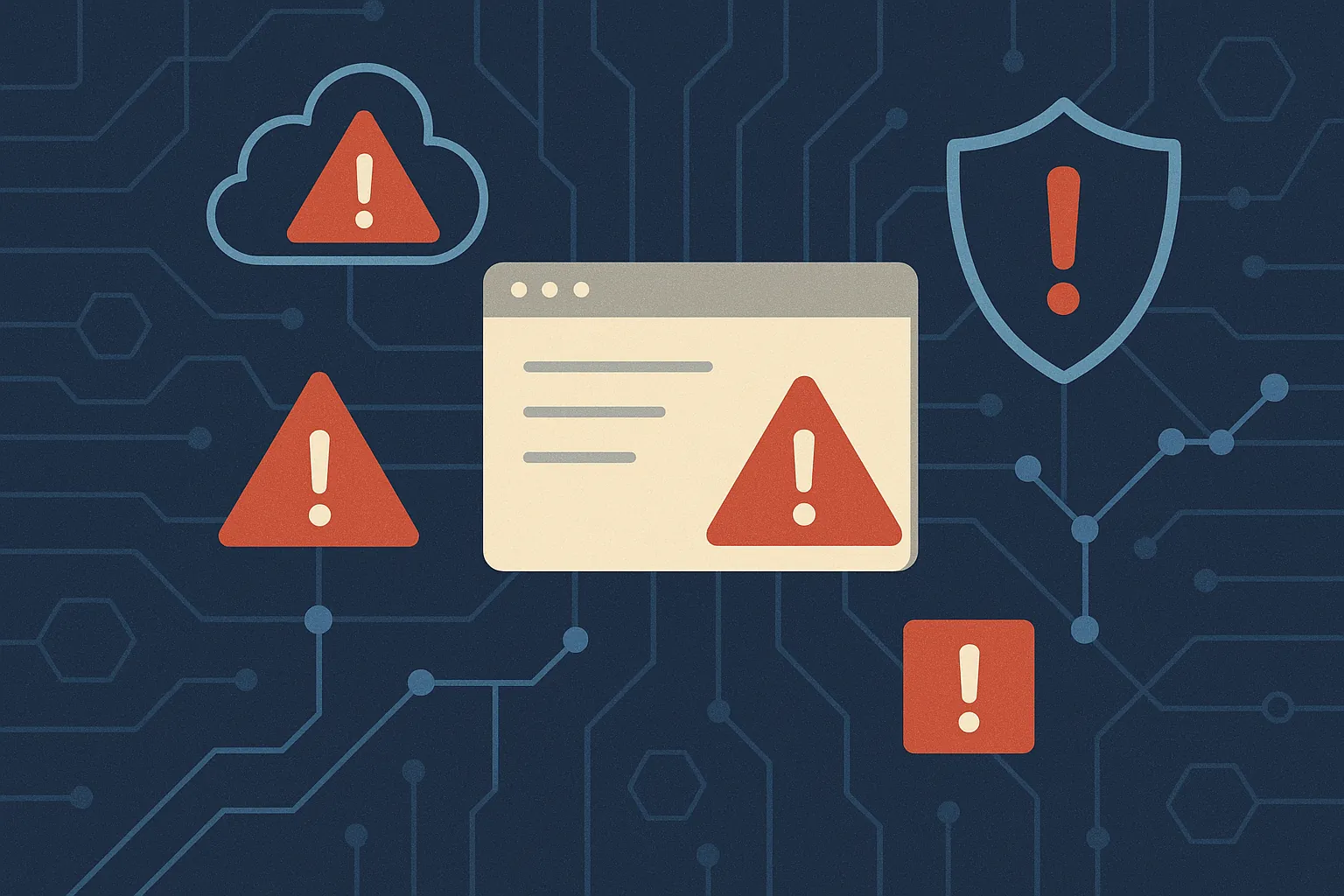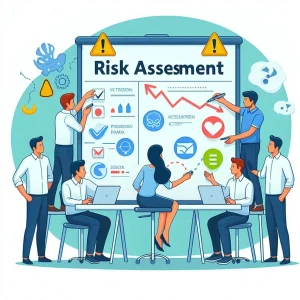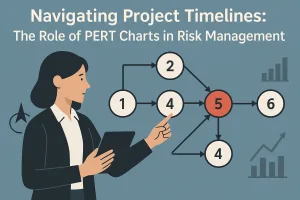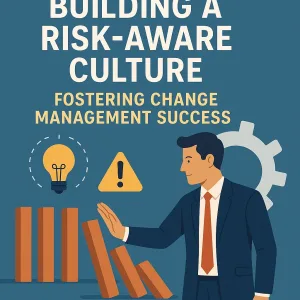Introduction to Risk Management in Website Projects
Particularly within website development, risk management plays a crucial role in ensuring the successful delivery of projects. It involves identifying, assessing, and prioritizing risks followed by coordinated efforts to minimize, monitor, and control the probability or impact of unfortunate events. This proactive approach is essential for project managers and risk analysts who aim to navigate the complexities of website projects effectively.
Definition of Risk Management and Its Importance
Risk management is defined as the systematic process of identifying potential risks that could negatively impact a project, assessing their likelihood and potential impact, and implementing strategies to mitigate these risks. In the context of website projects, effective risk management is vital for several reasons:
- Ensures Project Success: By anticipating potential issues, project managers can develop contingency plans that help keep projects on track.
- Enhances Decision-Making: Understanding risks allows project managers to make informed decisions, allocate resources effectively, and prioritize tasks.
- Improves Stakeholder Confidence: A well-managed risk strategy demonstrates to stakeholders that the project team is prepared for uncertainties, fostering trust and support.
Overview of Common Risks Associated with Website Projects
Website development projects are fraught with various risks that can derail progress if not addressed proactively. Some of the most common risks include:
- Scope Creep: Uncontrolled changes or continuous growth in project scope can lead to delays and budget overruns.
- Technical Challenges: Issues related to technology, such as software bugs, integration problems, or compatibility issues, can hinder project progress.
- Resource Availability: The unavailability of key personnel or resources can lead to project delays and affect the quality of deliverables.
- Stakeholder Misalignment: Differing expectations among stakeholders can result in conflicts and dissatisfaction with the final product.
The Impact of Unmanaged Risks on Project Timelines, Budgets, and Overall Success
Failing to manage risks effectively can have significant repercussions on website projects:
- Delays in Timelines: Unforeseen issues can lead to project delays, pushing back launch dates and affecting overall project schedules.
- Budget Overruns: Addressing unmanaged risks often requires additional resources, leading to increased costs that can exceed initial budgets.
- Compromised Quality: Rushed fixes or last-minute changes due to unmanaged risks can result in a subpar final product, affecting user experience and satisfaction.
- Reputation Damage: Consistently failing to deliver projects on time and within budget can harm the reputation of the project team and the organization as a whole.
Understanding and implementing effective risk management strategies in website development projects is essential for project managers and risk analysts. By identifying potential risks early and developing mitigation strategies, teams can enhance their chances of delivering successful projects that meet stakeholder expectations and achieve desired outcomes.
Identifying Risks in Website Development
Understanding and addressing risks is crucial for ensuring successful project delivery. This section delves into the various types of risks that can arise during website development, providing project managers and risk analysts with insights on how to proactively identify and mitigate these issues.
Categorization of Risks
Website development projects can encounter a variety of risks, which can be broadly categorized into four main types:
- Technical Risks: These involve challenges related to the technology stack, such as software bugs, integration issues, or the use of unproven technologies. Technical risks can lead to delays and increased costs if not managed properly.
- Operational Risks: These risks pertain to the day-to-day operations of the project, including team dynamics, communication breakdowns, and workflow inefficiencies. Operational risks can hinder project progress and affect team morale.
- Financial Risks: Financial risks arise from budget overruns, unexpected costs, or changes in project scope that can lead to increased expenditures. Effective financial management is essential to mitigate these risks.
- External Risks: These include factors outside the control of the project team, such as changes in market conditions, regulatory requirements, or shifts in customer preferences. External risks can significantly impact project outcomes and timelines.
Methods for Identifying Risks
To effectively manage risks in website development, project managers can employ several methods for identifying potential issues:
- Brainstorming Sessions: Engaging the project team in brainstorming sessions can help surface potential risks. This collaborative approach encourages open discussion and allows team members to share their insights and experiences.
- SWOT Analysis: Conducting a SWOT (Strengths, Weaknesses, Opportunities, Threats) analysis can provide a structured framework for identifying risks. By evaluating the project’s strengths and weaknesses alongside external opportunities and threats, teams can pinpoint areas of concern.
- Expert Consultations: Consulting with industry experts or experienced project managers can provide valuable perspectives on potential risks. Their insights can help identify risks that may not be immediately apparent to the project team.
Examples of Common Risks
Several common risks frequently arise during website development projects, including:
- Scope Creep: This occurs when the project scope expands beyond the original plan, often due to changing client requirements or additional features being requested. Scope creep can lead to delays and increased costs if not managed effectively.
- Technology Failures: Reliance on specific technologies can pose risks, especially if those technologies are not well-supported or if there are compatibility issues. Technology failures can disrupt project timelines and lead to costly rework.
- Resource Limitations: Insufficient resources, whether in terms of personnel, budget, or time, can severely impact project delivery. Identifying resource limitations early on allows project managers to make necessary adjustments to avoid project delays.
By categorizing risks, employing effective identification methods, and being aware of common pitfalls, project managers can proactively address potential issues in website development projects. This proactive approach not only enhances project outcomes but also fosters a culture of risk awareness within the team.
Assessing Risks: Likelihood and Impact
Effective risk management is crucial for ensuring project success. This section focuses on how project managers can assess the likelihood and potential impact of identified risks, providing a structured approach to proactively address challenges in website development projects.
Frameworks for Risk Assessment: Qualitative vs. Quantitative Methods
When assessing risks, project managers can utilize two primary frameworks: qualitative and quantitative methods.
- Qualitative Risk Assessment: This approach involves subjective evaluation of risks based on their characteristics. It typically includes brainstorming sessions, expert judgment, and stakeholder interviews to identify potential risks and their implications. Qualitative methods are useful for early-stage projects where data may be limited, allowing teams to prioritize risks based on their perceived severity and likelihood.
- Quantitative Risk Assessment: In contrast, quantitative methods rely on numerical data and statistical analysis to evaluate risks. This approach often involves the use of historical data, probability distributions, and modeling techniques to estimate the potential impact of risks in measurable terms. Quantitative assessments provide a more objective basis for decision-making, enabling project managers to calculate potential costs associated with risks and prioritize them accordingly.
Tools and Techniques for Evaluating Risks
To effectively evaluate risks, project managers can employ various tools and techniques, including:
- Risk Matrices: A risk matrix is a visual tool that helps project managers categorize risks based on their likelihood of occurrence and potential impact. By plotting risks on a grid, teams can quickly identify which risks require immediate attention and which can be monitored over time.
- Impact vs. Likelihood Scale: This technique involves creating a scale to rate the likelihood of a risk occurring and its potential impact on the project. By assigning numerical values to both dimensions, project managers can calculate a risk score that helps prioritize risks based on their overall threat level.
- Risk Scoring Systems: A more advanced approach involves developing a risk scoring system that incorporates multiple factors, such as the severity of impact, likelihood, and the time frame for potential occurrence. This system allows for a comprehensive assessment of risks, enabling project managers to make informed decisions about resource allocation and mitigation strategies.
Importance of Prioritizing Risks Based on Assessment Outcomes
Once risks have been assessed using the aforementioned frameworks and tools, it is essential for project managers to prioritize them based on the assessment outcomes. Prioritization ensures that resources are allocated effectively, focusing on the most critical risks that could derail the project.
- Resource Allocation: By identifying high-priority risks, project managers can allocate resources more efficiently, ensuring that the most significant threats are addressed promptly.
- Mitigation Strategies: Prioritization also aids in developing targeted mitigation strategies. Understanding which risks pose the greatest threat allows teams to implement specific actions to reduce their likelihood or impact, ultimately enhancing the project’s chances of success.
- Continuous Monitoring: Finally, prioritizing risks facilitates ongoing monitoring and reassessment throughout the project lifecycle. As new information emerges or project conditions change, project managers can adjust their focus and strategies accordingly, maintaining a proactive stance on risk management.
Assessing risks in website development projects is a critical component of effective project management. By employing qualitative and quantitative frameworks, utilizing appropriate tools and techniques, and prioritizing risks based on assessment outcomes, project managers can proactively address potential issues, ensuring smoother project execution and successful outcomes.
Strategies for Risk Mitigation
Effectively identifying and mitigating risks is crucial for ensuring project success. Proactive risk management not only helps in minimizing potential setbacks but also enhances the overall quality of the final product. Here are some key strategies for mitigating risks in website development projects:
1. Developing a Risk Response Plan
Creating a comprehensive risk response plan is foundational to effective risk management. This plan should outline specific strategies for addressing identified risks, categorized into four main approaches:
- Avoidance: Altering project plans to eliminate the risk or its impact. For instance, if a particular technology poses a risk due to its instability, opting for a more reliable alternative can mitigate that risk.
- Transfer: Shifting the risk to a third party, such as outsourcing certain components of the project to specialized vendors. This can be particularly effective in managing risks related to technical expertise or resource availability.
- Mitigation: Implementing measures to reduce the likelihood or impact of the risk. This could involve adopting agile methodologies that allow for iterative testing and feedback, thereby catching issues early in the development process.
- Acceptance: Acknowledging the risk and preparing to deal with its consequences if it occurs. This is often applicable for low-impact risks where the cost of mitigation exceeds the potential loss.
2. Best Practices for Implementing Mitigation Strategies
To ensure that risk mitigation strategies are effectively implemented, consider the following best practices:
- Contingency Planning: Develop contingency plans for high-priority risks. This involves outlining specific actions to take if a risk materializes, ensuring that the project team is prepared to respond swiftly and effectively.
- Stakeholder Communication: Maintain open lines of communication with all stakeholders throughout the project lifecycle. Regular updates and discussions about potential risks and mitigation strategies foster a collaborative environment where everyone is informed and engaged. This can also help in identifying new risks as the project progresses.
3. Real-Life Examples of Successful Risk Mitigation
Examining real-life case studies can provide valuable insights into effective risk mitigation strategies. For instance:
- E-commerce Website Launch: A major e-commerce company faced significant risks related to server downtime during peak traffic periods. By implementing a robust load testing strategy and investing in scalable cloud infrastructure, they successfully mitigated the risk of downtime, resulting in a smooth launch and increased customer satisfaction.
- Content Management System (CMS) Development: A digital agency encountered risks associated with integrating third-party plugins into their CMS. By conducting thorough compatibility testing and maintaining a backup plan for critical functionalities, they were able to avoid major disruptions during the development phase.
By adopting these strategies and learning from real-world examples, project managers and risk analysts can proactively address risks in website development projects, ultimately leading to more successful outcomes.
Monitoring and Reviewing Risks Throughout the Project Lifecycle
Effective risk management is crucial for ensuring project success. Continuous monitoring and reviewing of risks throughout the project lifecycle not only helps in identifying potential issues early but also allows project managers and risk analysts to adapt their strategies proactively. Here are some key points to consider:
Establishing Key Performance Indicators (KPIs) for Risk Monitoring
- Define Clear KPIs: Establishing specific, measurable KPIs related to risk management is essential. These indicators can include metrics such as the number of identified risks, the severity of risks, and the effectiveness of mitigation strategies. By quantifying risks, project managers can better assess the project’s health and make informed decisions.
- Regular Data Collection: Implement a systematic approach to collect data on these KPIs throughout the project. This could involve using project management software that tracks risk metrics in real-time, allowing for immediate insights into the project’s risk topic.
- Benchmarking: Compare the established KPIs against industry standards or past projects to gauge performance. This benchmarking can highlight areas needing attention and help in setting realistic expectations for risk management.
Regular Risk Review Meetings and Updates to the Risk Management Plan
- Scheduled Meetings: Conduct regular risk review meetings with the project team and stakeholders. These meetings should be scheduled at key milestones or phases of the project to ensure that all team members are aware of current risks and their statuses.
- Documentation Updates: After each review meeting, update the risk management plan to reflect any new risks identified, changes in risk status, or adjustments to mitigation strategies. This living document should be easily accessible to all team members to ensure transparency and accountability.
- Stakeholder Involvement: Engage stakeholders in the risk review process. Their insights can provide valuable perspectives on potential risks and help in refining mitigation strategies. This collaborative approach fosters a culture of shared responsibility for risk management.
Adjusting Mitigation Strategies
- Dynamic Risk Assessment: Recognize that risks are not static; they evolve as the project progresses. Regularly reassess risks to determine if their likelihood or impact has changed, and adjust mitigation strategies accordingly. This proactive approach can prevent minor issues from escalating into major problems.
- Feedback Loops: Create feedback loops where team members can report on the effectiveness of current mitigation strategies. This feedback is crucial for understanding what works and what doesn’t, allowing for timely adjustments.
- Scenario Planning: Utilize scenario planning to anticipate potential changes. By considering various “what-if” scenarios, project managers can develop contingency plans that are ready to be implemented if certain risks materialize.
Continuous monitoring and reviewing of risks throughout the website project lifecycle is vital for successful project execution. By establishing KPIs, holding regular review meetings, and adjusting strategies, project managers and risk analysts can effectively mitigate risks and enhance the likelihood of project success. This proactive approach not only safeguards the project but also builds a resilient team capable of navigating uncertainties in the dynamic field of website development.
Conclusion: The Importance of Proactive Risk Management
The significance of identifying and mitigating risks cannot be overstated. The complexity of website development projects increases, making it essential for project managers and risk analysts to stay ahead of potential issues. Proactive risk management serves as a cornerstone for successful project delivery, ensuring that teams can navigate challenges effectively and maintain project momentum.
- Recap of Significance: Identifying risks early in the project lifecycle allows teams to develop strategies that minimize their impact. By recognizing potential pitfalls—such as scope creep, technical challenges, or resource limitations—project managers can implement measures that safeguard project timelines and budgets. This foresight not only enhances the quality of the final product but also fosters a culture of accountability and preparedness within the team.
- Encouragement for Proactive Approach: Project managers are encouraged to adopt a proactive stance towards risk management. This involves not only identifying risks but also continuously monitoring and reassessing them throughout the project. By fostering open communication and collaboration among team members, project managers can create an environment where risks are discussed openly, and solutions are developed collectively. This proactive mindset empowers teams to respond swiftly to emerging challenges, ultimately leading to more successful project outcomes.
Proactive risk management is not just a best practice; it is a vital component of successful website project management. By prioritizing risk identification and mitigation, project managers can navigate the complexities of website development with confidence, leading to improved project performance and stakeholder satisfaction.
Find out more about Shaun Stoltz https://www.shaunstoltz.com/about/.
This post was written by an AI and reviewed/edited by a human.



